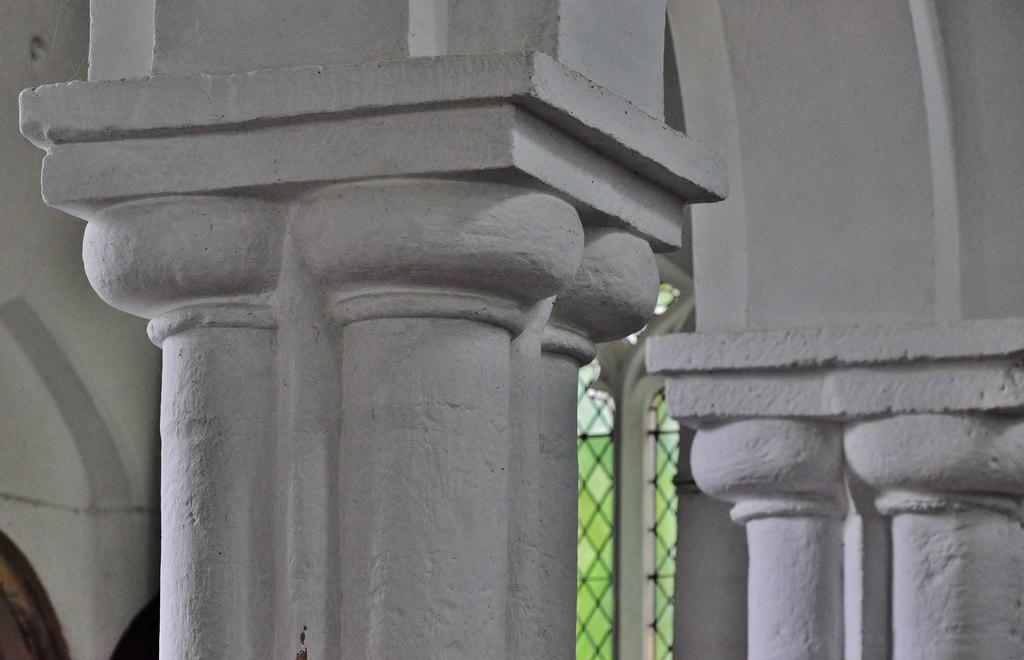St James
Little Paxton, Cambridgeshire
A 900 year old Grade II* building with great architecture and modern facilities which is open every day for community events.

Stunning Anglo-Saxon church in Cambridgeshire which Pevsner describes as 'the interior is not only a surprise, it is also an architectural shock of a high order'.
Great Paxton, Cambridgeshire
It is not only Saxon, and a minster church too, but also cruciform, with aisles. The original crossing piers survive, as does the tall arch of the north transept and both the nave arcades, complete with their Saxon capitals.
A 1971 excavation discovered the lower parts of the transept walls in the churchyard. This all makes the church a unique survival in England. It is thought to have been built about 20 years before the Norman Conquest.
Pevsner's said:
There are very few Anglo-Saxon buildings one can call grandiose. Stow in Lincolnshire is one, Great Paxton is without doubt another. Yet on approaching the building, no one can form any idea what is in store. Here is a church of grey stone and brown cobbles with a Perpendicular west tower, Perpendicular windows and south doorway, and a Perpendicular chancel, except for one north window with intersecting tracery of the late 13th century.
The clerestory is Perpendicular too, but a hint of the interior is given.
Some windows on both sides are round arched (in ironstone) and double splayed, they are Saxon. The interior is not only a surprise, it is also an architectural shock of a high order. This was a cruciform church with a true crossing, and it was an aisled church. Both in pre-Conquest times are extreme rarities. The date of the church is not known, but it is not likely to be earlier than 1000 AD. As for the crossing, a true crossing means that it is as wide as the nave, as the chancel, and as the transepts. this was a matter of course in Romanesque architecture on the Continent at that date, but it does not even apply to Stow. It does, hoever, apply to Great Paxton, as it is fully displayed in the north transept arch.The responds are four demi shafts with thin shafts inbetween. They carry lumpy, shapeless capitals and a plain abacus, and then the unmoulded arch is thrown across at a height unparalleled in early English architecture. The same arrangement applied to the other arches, even if the responds are not so well preserved and the arches are on the south and a side triple chamfered of the late 13th century. Moreover, as a kind of framing to these groups of four shafts side by side, a thin pilaster strip ran up and no doubt continued all round the arch. This is a usual late Anglo-Danish thing ( cf St Benet, Cambridge) and is visible in several instances.
The nave is just amazing. The only other Anglo-Saxon aisled naves are Brixworth and Lydd, and the arcade piers of both are just untreated chunks of wall. But at Great Paxton there are proper compound piers, even if they are of a very starne kind, as if Continental piers have been misunderstood. The easternmost piers are quatrefoil in section, placed diagonally and with thin shafts between the foils so that they come out in the cardinal directions. The westernmost piers have spurs instead of the thin shafts. The arcade went on to three instead of the two present bays. One west respond was re-used in the new place. This and the two east responds are much more acceptably detailed than the capitals and abaci of the piers: capitals as bulgy as those of the crossing and one-step abaci. The arches are single step too. The responds are built up of long and short stones rather like Late Anglo-Saxon quoins. The date of the chancel is confirmed by the sedilia.
Little Paxton, Cambridgeshire
A 900 year old Grade II* building with great architecture and modern facilities which is open every day for community events.
Buckden, Cambridgeshire
St Mary’s is a beautiful church, in a beautiful setting and many people come from far and wide to enjoy the building, its history, and its sense of peace and tranquillity.
St Neots, Cambridgeshire
The 9th century monk after whom this town is named lived and died at St Neot in Cornwall, his relics were later brought here, so a second town is named for him.